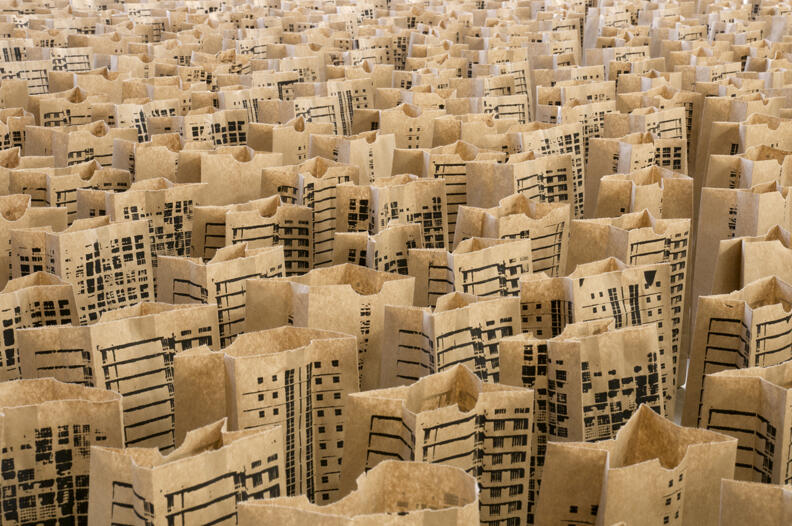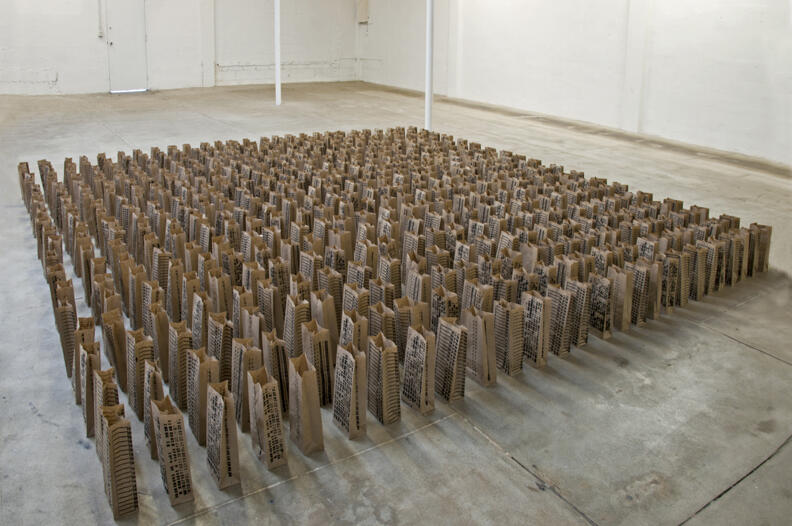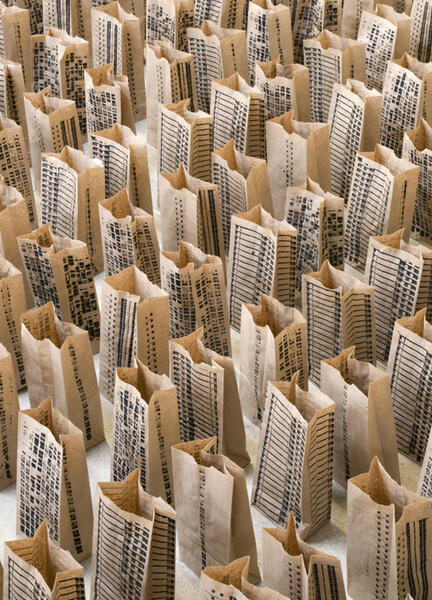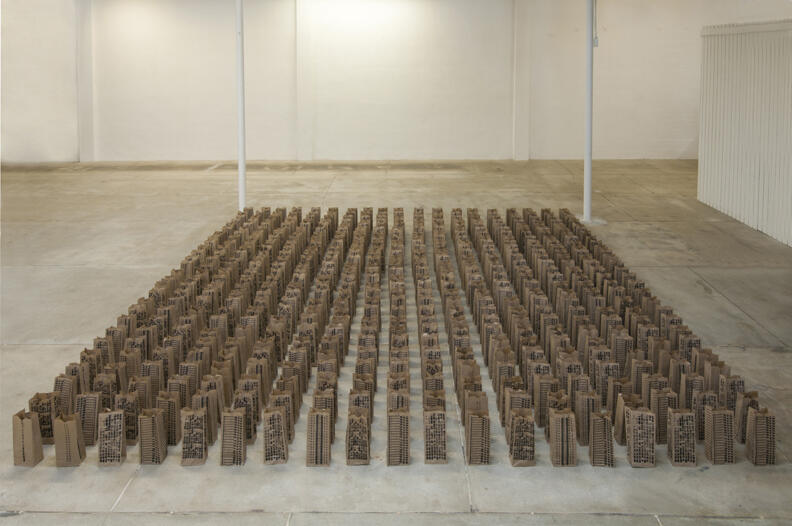Puntos de Fuga . Arquitecturas Possibles
(Vanishing Points. Possible Architectures) at the MAMM in Medellin, Colombia
In Alliance with the Fundación Fondo Internacional de las Artes - FIART- (International Art Fund Foundation) , 18 Ibero-American artists are coming together at the Biblioteca EPM/Sala de Ciudad, of the Museo de Arte Moderno de Medellín, MAMM, to present their proposals on contemporary questions of human relationship with spaces, with being, with inhabiting, and with setting habits that continuously and relentlessly impact personal and collective notions of well being. The artists are: the Cuban artist Carlos Garaicoa, the Venezuelan artista Alexander Apostol, the Colombian artists Edgar Guzmanruiz, Fredy Alzate, Grupo Utopía, Jaime Ávila, John Mario Ortiz Juan Raúl Hoyos, Nicolás París, and Víctor Muñoz; the Ecuatorian artist Tomás Ochoa and the Spaniards Jordi Colomer Jorge Yeregui, Simona Rota, and Santiago Cirugeda,
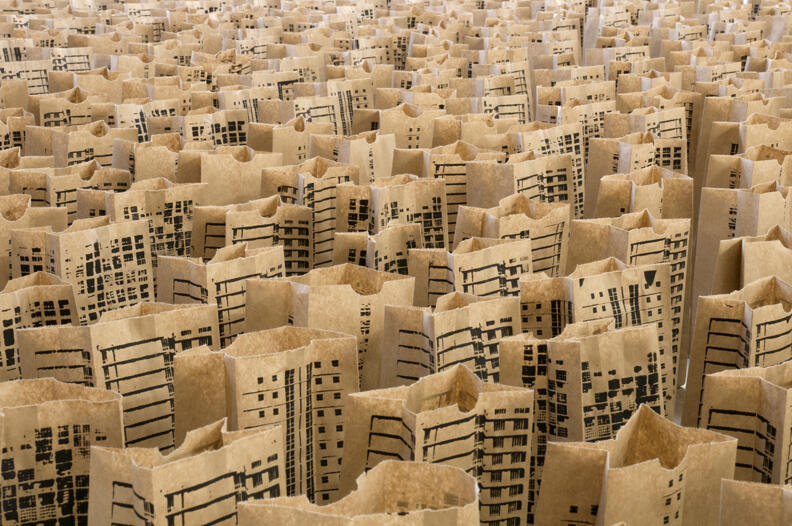
Fragment of the curatorial statement by Oscar Roldán-Alzate
Today, the city of each and every one of us does not conceive a vanishing point, nor two, nor three. We need as many vantage points as constructions without architects of the emerging populations in the universe of the possible. It’s the only guarantee so that the spirit of men gives its creativity to the service of inhabiting and to, why not, be able to escape.
“Puntos de Fuga, Possible Architectures” is a curatorial investigation that hopes to create points of reflection and critical evaluations from the field of the arts of architecture and its many derivates. This project raises inevitable contemporary questions about the speculation of human relationship with spaces, with being, with inhabiting, and with setting habits that continuously and relentlessly impact personal and collective notions of well being.
Every time that a new visual contact appears, the conscience of our city multiplies-that which I have and feel- in a way that my city not only folds over itself but also folds over the cities of others. Although the sociopolitical arguments on what inhabited environments in South America are like are widely know- thanks to the precariousness of the economic system in contraposition with the accelerated demographic growth- it is also true that whatever caused the accumulation of urban masses- the utopia of the new American city traced in paper- overflowed with the peremptory necessity of doing what men do: dwell. The geography, then, can be different, but only if the necessities are precisely those which are stated and there is enough land to make “possible architectures”.
The vanishing points (and the architectures correlated with them, which we have classified as central, oblique, and aerial) denote temporalities and its multiplicity projects a greater liberty. Order is gradually revealed by the necessity of “being” in a body that opposed uniformity. Freedom is imposed in the name of the functional implementation of emerging ways of resolving basic inhabiting problems.

